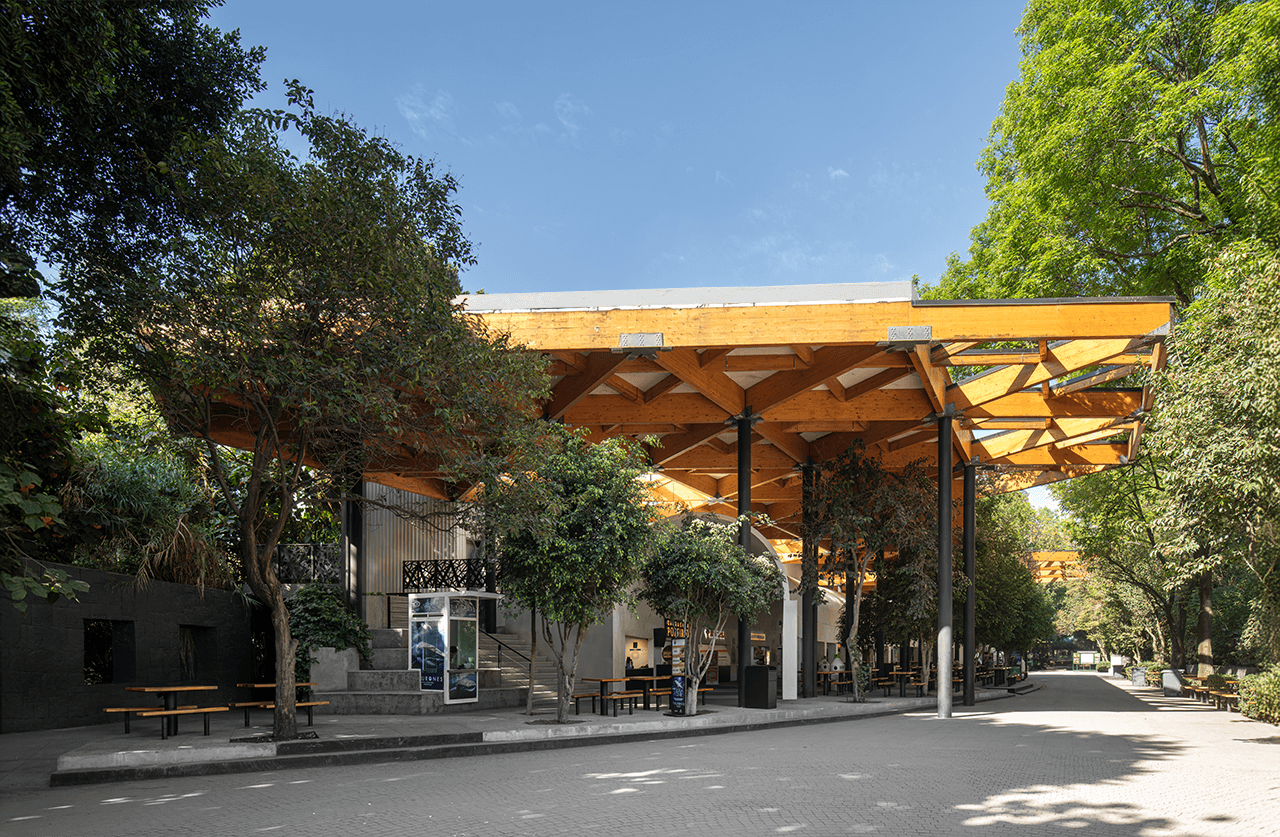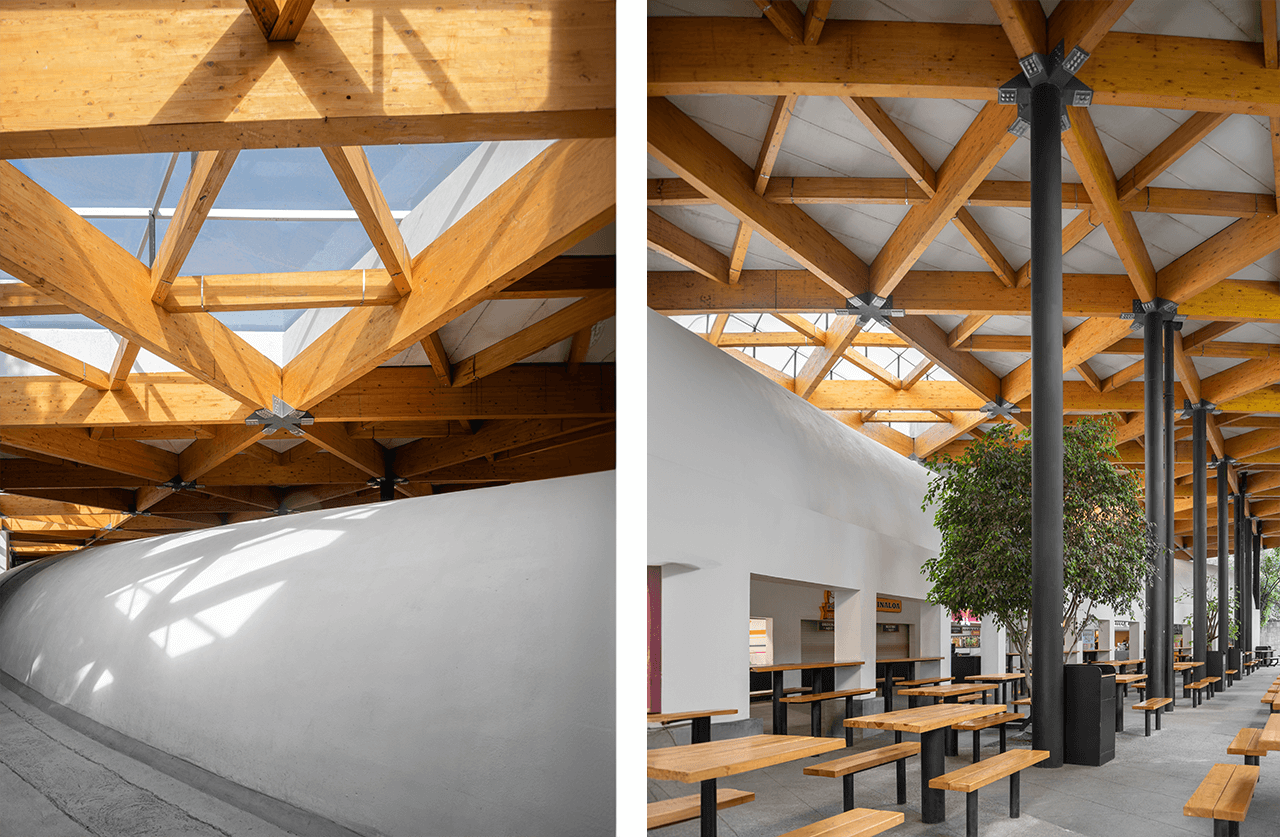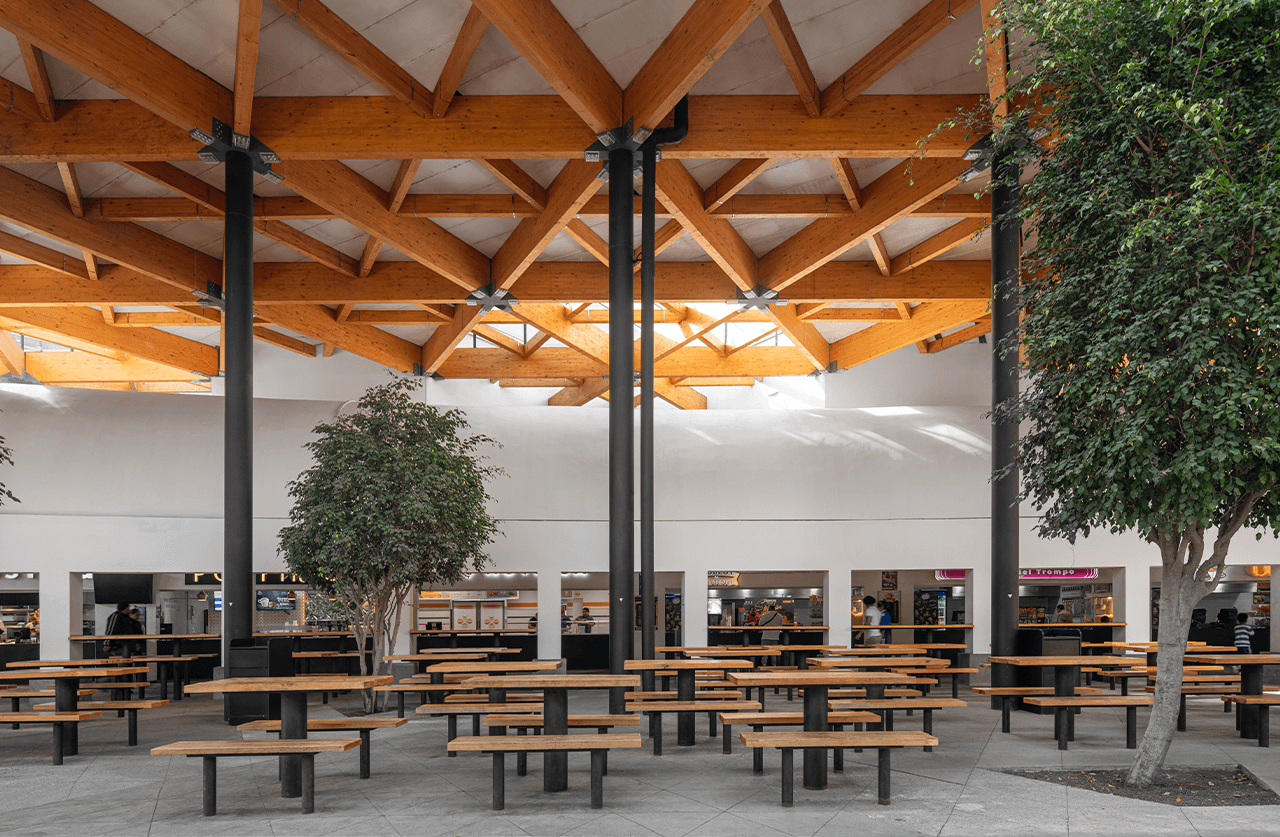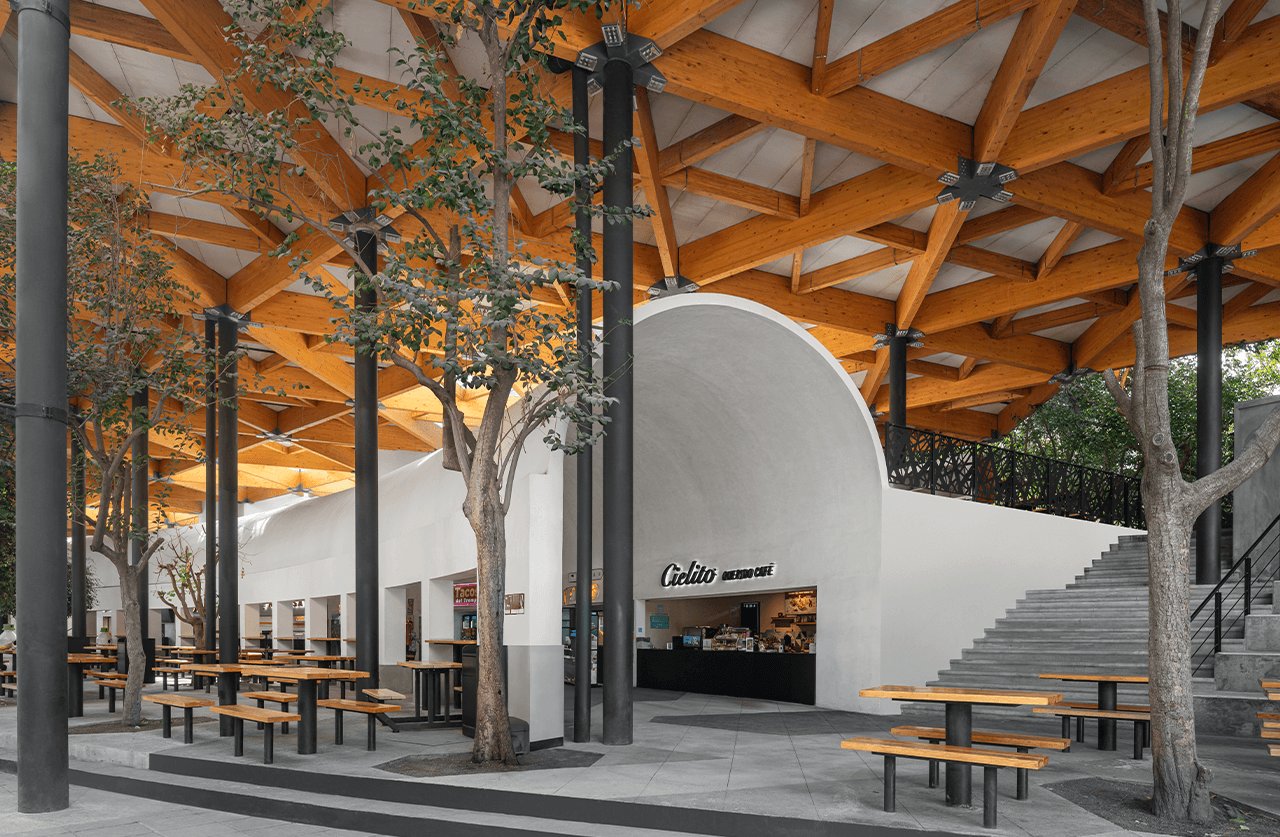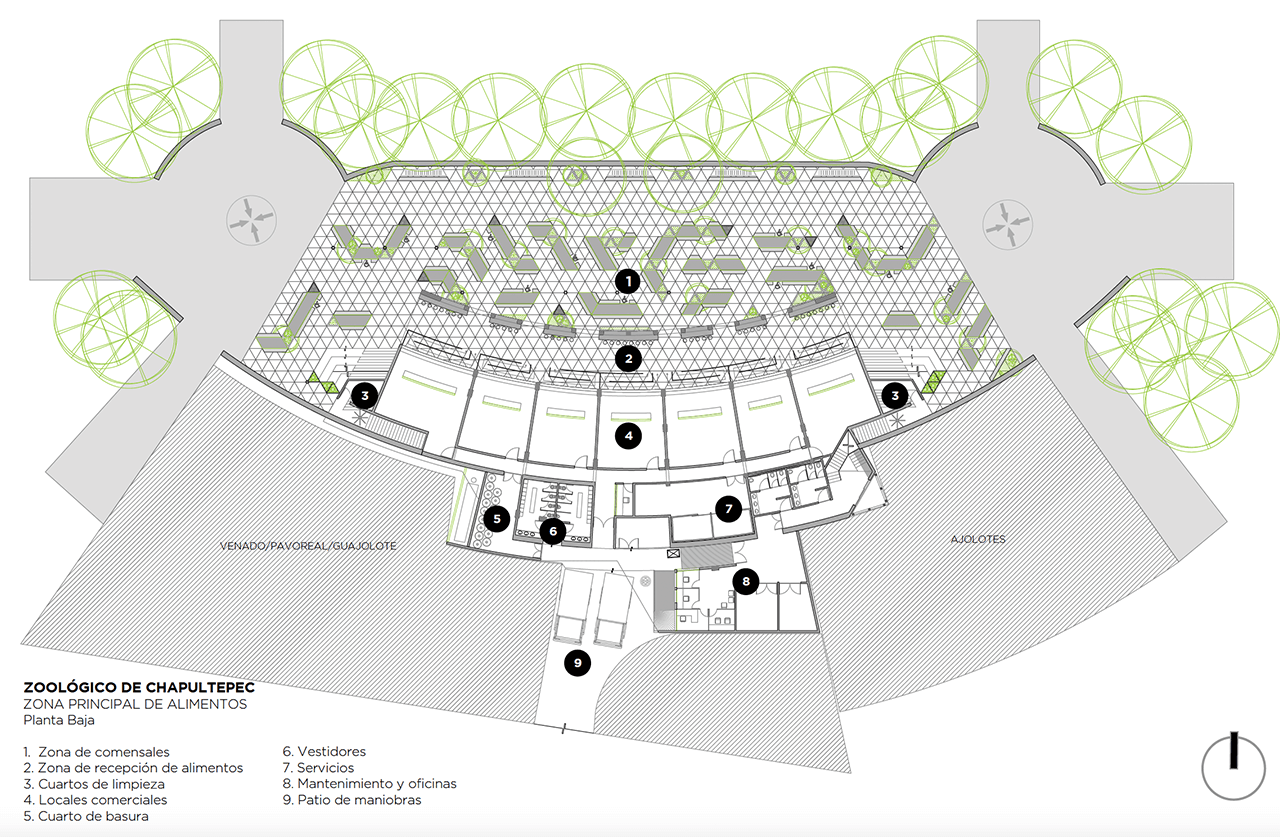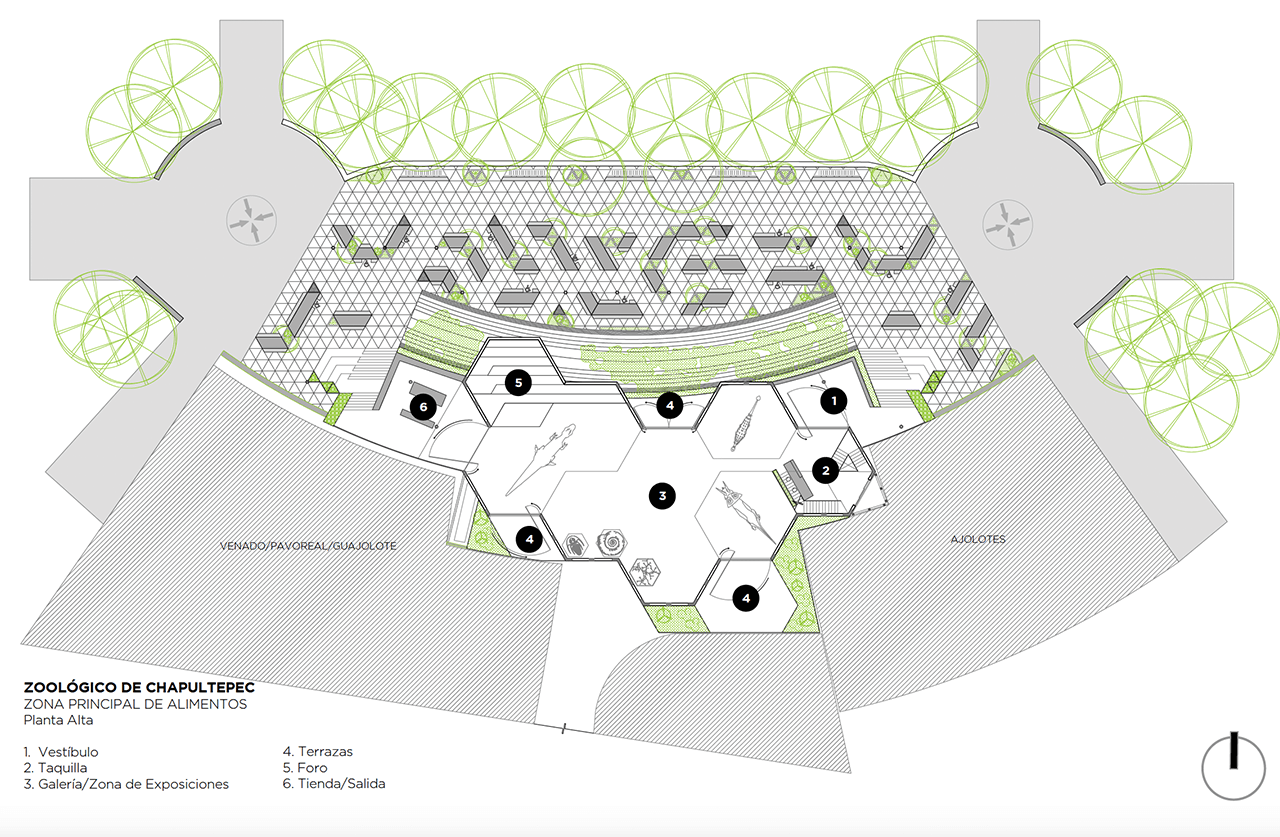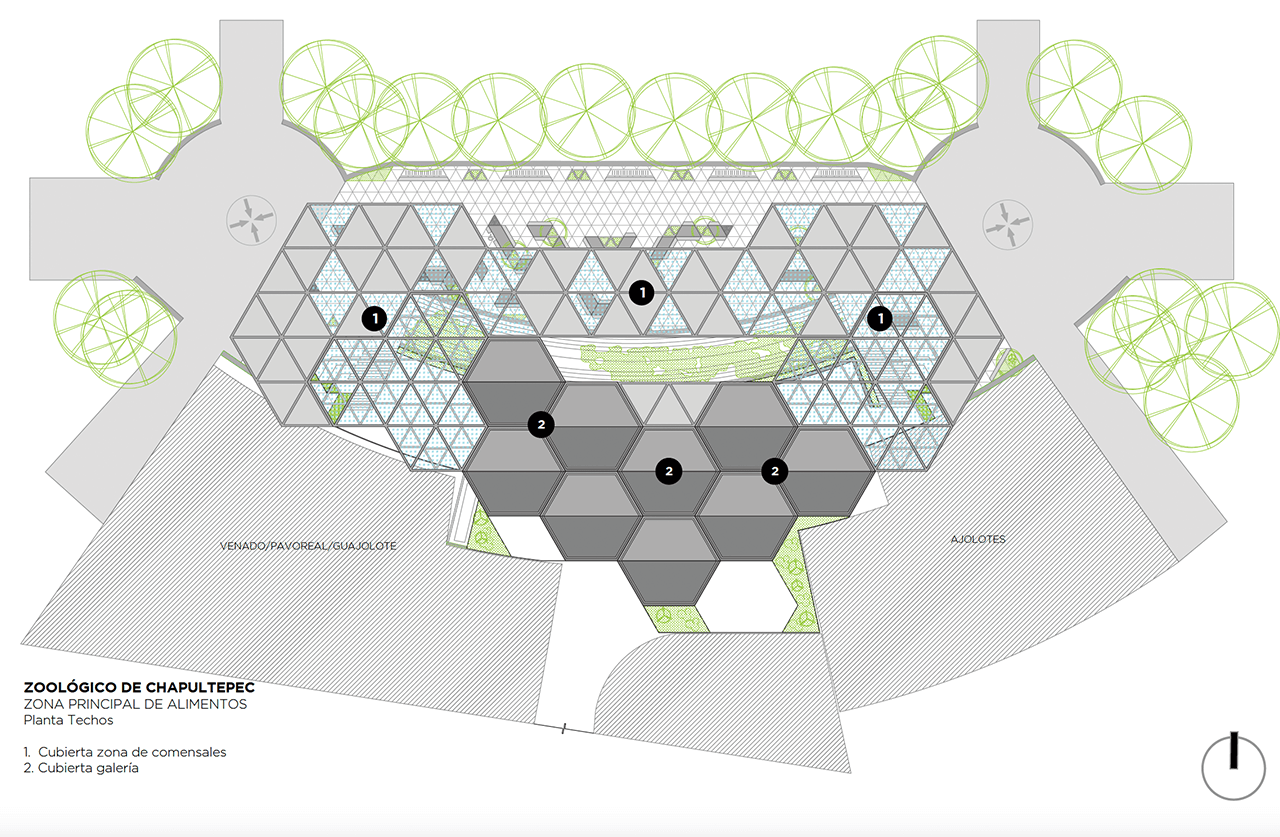Chapultepec Zoo's Food Court and Gallery
This project conceptualizes the rehabilitation of the space in direct connection with its natural context. The rehabilitation was taken as an opportunity to redeem and resignify the food area of the Chapultepec Zoo. Each piece is linked by developing to the maximum the constructive and structural value of a new materiality, summoning in its integration as an iconic point in which the people who transit, live and coexist in the zoo always find the balance between social recreation and respect for the environment in comfortable and modern spaces.
The project consists of a mixed building: on the first floor there is a new esplanade for diners as well as a corridor for food preparation with complementary services and a gallery. This allows for a more casual transition between the preparation area and the dining area, inviting people to gather, socialize and appropriate the common space without spatial barriers.
Upstairs, an open gallery is built with terraces and elements that permeabilize the area, offering unobstructed views, a sense of continuity between inside and outside, a better use of light and natural ventilation, and granting the playful use of a space without spatial barriers for curatorial purposes, exhibition and appreciation and education of the exhibits to be carried out, which highlights its role as an educational space for new generations in terms of the care the environment and biodiversity of the zoo. The dining esplanade, as well as the access and exit to the gallery are sheltered under a laminated wood roof, while the food preparation and service corridor is arranged in a vault.
This unique form defines and respects the footprints and passages of diners and visitors, transforming them into consolidated and accessible circulations that connect meeting points and enable access without losing the relationship with the immediate context and the natural environment. The vault shape allows for the creation of wide open spaces without intermediate columns, facilitating movement and interaction and creating a welcoming atmosphere with sensations of spaciousness and comfort that trigger bonding and interaction between people while they wait for their food.
From the beginning, we defined a food court that would not be a foreign incrustation in the zoo or in the Chapultepec forest, but that in its appearance, language and connection with the environment would become part of the place, so the choice of laminated wood as a protagonist element was based on the need to use a material that was part of the forest.
Since it is a common space for socializing, it had to be an open and shaded place for the enjoyment and recreation of several people, so the main roof, consisting of a plywood roof with a triangular pattern, was designed taking as a model the structure of a honeycomb as a symbolic representation of community, which is achieved through food as an act of coexistence, meeting and reunion between family and friends.
The roof and a honeycomb match in that they have an organized structure, with each geometric piece fitting perfectly with the others. This structure is a reflection of how a community can collaborate and live harmoniously and efficiently in a common space.
Thus, through a hybrid construction system, an innovative, environmentally responsible and functional appearance is reinvented that clearly manifests the intention of generating common spaces for enjoyment and recreation.
Video: https://www.youtube.com/watch?v=SKePFgh-Eyc
Design Team: Eduardo Gorozpe, Oscar Renucci, Manuel Carlos, Lilian Garcia, Diego Vazquez, Andrea Patlan, Miguel Becerril
Structural Design: Ing. Betancourt
Video: Recording Architecture
Photography: Recording Architecture, Jaime Navarro
Renderer: Ricardo Hernandez
Facilities: ARUS
